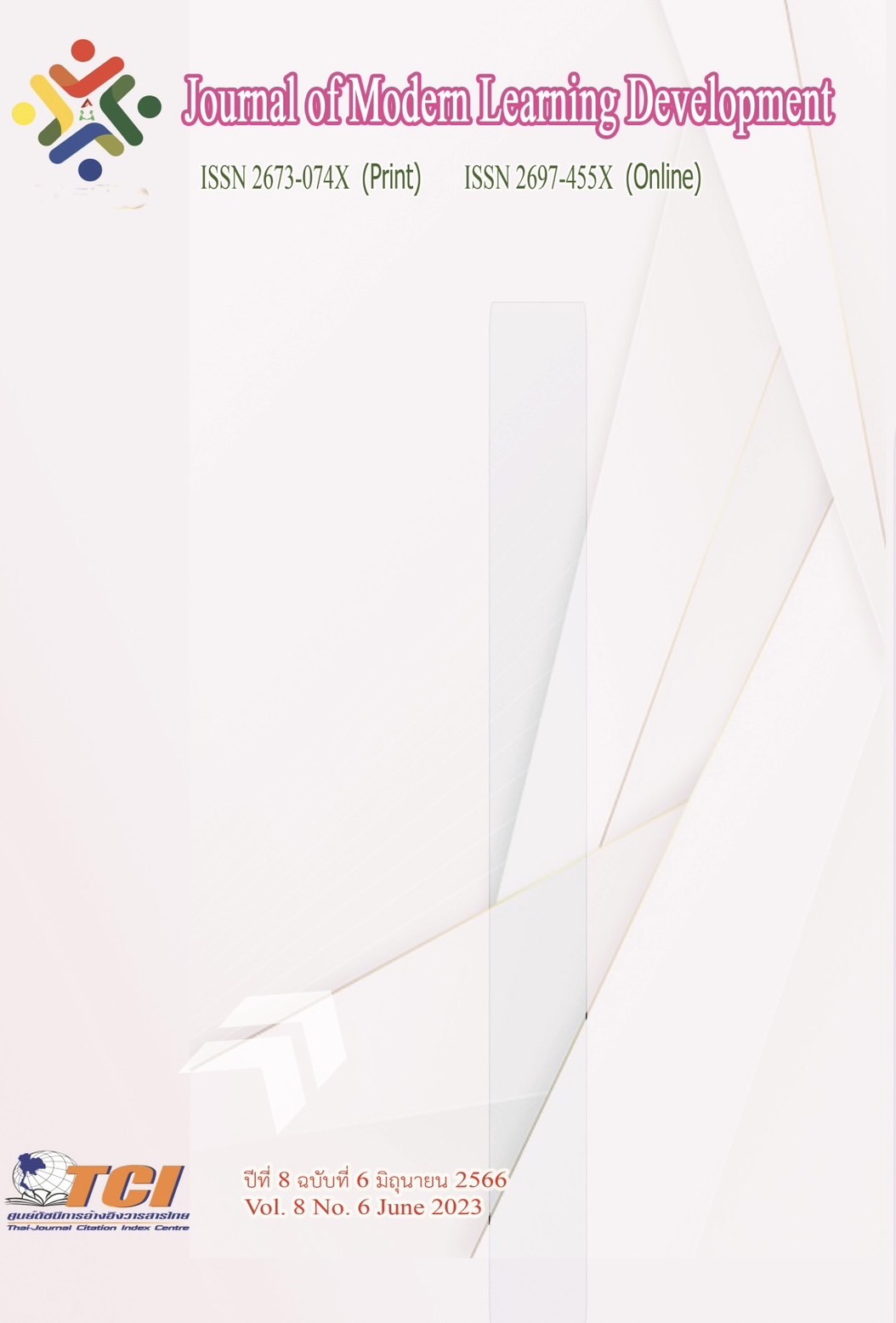Factors Affecting Brand Loyalty of Local Community in Kalasin Province
Main Article Content
Abstract
The objectives of this research were 1) to study the level of affected factors, 2) to investigate the level of brand loyalty, 3) to examine the equation of factors affecting brand loyalty, 4) to find the recommended factors that built the brand loyalty and 5) to study the model of factors affecting brand loyalty of local communities in Kalasin Province. This research is a mixed method research. There were 400 samples used in the research which determined through Yamane formula. The instruments were the questionnaires. The statistics used were frequency distribution, percentage, mean, standard deviation, statistical hypothesis testing, and multiple regression analysis by Stepwise with significance at the .01 level. The data for the qualitative research were the interview from 15 samples and the confirming results were analysis data from 18 people with specific method sampling.
The results shown that 1) the level of affected factors was at a high level, 2) the level of brand loyalty was at high level, 3) the equation of factors affecting brand loyalty could be written in the form of raw scores and standard scores as follows:
Y = 1.214+ .099X2 - .060X3 + .115X4 + .158X5 +.125X6 +.232X9
Zr = .284Z9 + .212Z6 + 176Z5 + .168Z2 + .154Z4+ -.089Z3.
4) suggestions of factors for building the brand loyalty focusing on the quality standards that caused consumers’ confidence on the product which could be cheaper, everyone could access, the package should be attractive and interesting, durable, and efficient. Moreover, it should have a variety of distribution channels comfortable to buy, and should be advertised continuously. The local products of the community should be standardized, fresh, clean, and safe, 6) there were 5 models or 14 factors affecting brand loyalty in the local community in Kalasin province; personal influence, and individual factors. In addition, there were 4 factors for influencing product; product quality factor, product factor (Uniqueness/Identity) and experiment. There were 3 factors for influencing sales; promotion, after-sales service, and price. There were two factors for influencing brand/brand; reputation and the uniqueness/identity of the brand. Lastly, there was an external influence which was an accessibility and location, media and public sector.
Article Details
References
คณะกรรมการเลือกตั้งจังหวัดกาฬสินธุ์. (2563). ข้อมูลผู้มีสิทธิเลือกตั้งจังหวัดกาฬสินธุ์. จังหวัดกาฬสินธุ์
ณัฐจิรา อิ่มวิเศษ. (2558). ปัจจัยที่มีความสัมพันธ์ต่อความภักดีในตราสินค้าเครื่องใช้ไฟฟ้าสตาร์
เวลล์ในกรุงเทพมหานคร. วิทยานิพนธ์ บริหารธุรกิจมหาบัณฑิต. กรุงเทพมหานคร :
มหาวิทยาลัยศิลปากร.
ณัฐพร ดิสนีเวทย์. (2559). ปัจจัยที่ส่งผลต่อความภักดีของลูกค้าที่มีต่อตราสินค้าร้านคาเฟ่ขนม
หวานในห้างสรรพสินค้า. การค้นคว้าอิสระ ศิลปศาสตรมหาบัณฑิต. กรุงเทพมหานคร :
มหาวิทยาลัยกรุงเทพ.
พิบูล ทีปะปาล. (2545). หลักการตลาด : ยุคใหม่ศตวรรษที่ 21. กรุงเทพมหานคร : โรงพิมพ์มิตร
สัมพันธ์ กราฟฟิค.
พรทิพย์ วิวิธนาภรณ์. (2557). ปัจจัยด้านส่วนประสมทางการตลาดที่มีอิทธพลต่อความภักดีต่อ
ตราสินค้าและพฤติกรรมการซื้อผลิตภัณฑ์โลชั่นบำรุงผิวกายยี่ห้อยูเซอรินในโรงพยาบาล
เอกชน. วิทยานิพนธ์ บริหารธุรกิจมหาบัณฑิต. กรุงเทพมหานคร : มหาวิทยาลัยศรีนครินทร์วิโรฒ.
วุฒิกร ตุลาพันธุ์. (2560). ความภักดีในตราสินค้า และคุณค่าตราสินค้าที่มีผลต่อการตัดสินใจเลือก
ซื้อรองเท้ากีฬาแบรนด์เกาหลี. การค้นคว้าอิสระ บริหารธุรกิจมหาบัณฑิต.
วัชรินทร์ สุทธิศัย, สิทธิพรร์ สุนทร และคณะ. (2563). ปัจจัยที่มีอิทธิพลต่อขวัญกำลังใจในการปฏิบัติงานของบุคลากรองค์การบริหารส่วนตำบลในพื้นที่กลุ่มจังหวัดภาคตะวันออกเฉียงเหนือตอนบน 1 ของประเทศไทย. วารสารเซนต์จอห์น มหาวิทยาลัยเซ็นต์จอห์น, ฉบับที่ 33 ปีที่ 23.
อดุลย์ จาตุรงคกุล และ ดลยา จาตุรงคกุล. (2550). พฤติกรรมผู้บริโภค. พิมพ์ครั้งที่ 8.
กรุงเทพมหานคร : มหาวิทยาลัยธรรมศาสตร์.
Alvin L.Bertrand. (1959). Sociological Factors Related to the Persistence of Low
Levels of Living in Rural. Areas. New York: McGraw-Hill Book Company.
Yamane, Taro. (1973). Statistics an Introductory Analysis. 3rd ed. New York :
Harper & Row.


